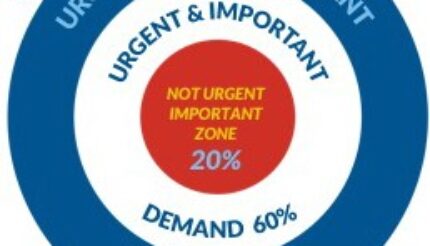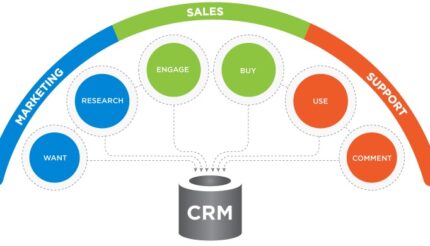Imagine that you get into your car, fire up the Satnav and then enter the destination as ‘Somewhere, anywhere but here’. Where will you end up? It’s highly unlikely that you’ll get where you wanted to be.
For some business owners, particularly those that are operating in the ‘Demand’ area of their business (see last month’s article) the constant battle with important and urgent tasks will deny them the time they need to form their vision of the company’s future. The trouble is, without a vision, most businesses will fail. According to the Office of National Statistics, of all the businesses started today in our area, only 44% will remain after 5 years. More than half of businesses started in 2012 don’t exist anymore. Why is that?
It’s certainly not because the owners didn’t have the skill to do the job they had created for themselves. It’s certainly not because the owners didn’t put in the hours. It’s certainly not because the owners didn’t want their businesses to succeed. So maybe it is because the owners didn’t have a vision – they simply hadn’t imagined what their business would be like in the future, maybe 5 years from now, but possibly even only 90 days from now.
In 1950, Boeing’s vision was to ‘become the dominant player in commercial aircraft and bring the world into the jet age’. Last year, it built 2 giant and highly complex aircraft every single day. So what, I hear you say? If you’re a builder, locksmith, florist or web designer, what does Boeing’s example possibly mean? It means simply this: if you don’t have a vision for your business, it is going, quite literally, nowhere.
So, how do you create a vision? It’s a question of asking yourself ‘What is our preferred future?’ and then describing what that future looks like. Remember to align your vision to what you truly believe in – anything that doesn’t tap into your fundamental values and principles will fail. At the same time, don’t be afraid to stretch your thinking – do you want to be the best business in Ramsey, the best in Cambridgeshire or something bigger?
When your vision looks and feels right to everyone involved in the business, it’s time to set some goals. Whilst a vision can be a distant but focussed ambition, your goals will need to be SMART; Specific, Measurable in some way, Achievable, focussed on Results in your business and bounded by a Timeframe so that they can’t be kicked into the long grass. This is not a new idea, but it is simple and very powerful. I am constantly surprised by the number of businesses that don’t have any goals.
So, there’s no rocket science in this week’s article, but take a moment to consider how you would answer the question ‘What is your vision and what are your goals?’ If you would struggle to answer, spend some time outside your business thinking about it – it is the most important task that every business owner needs to do.
Next month, I’ll take a look at money mastery – do you know your historical and forecast numbers? They’re one of the keys to business growth.





